Bird call classifiers
Decision table for identifying bird calls
| Bird | Description | Audio |
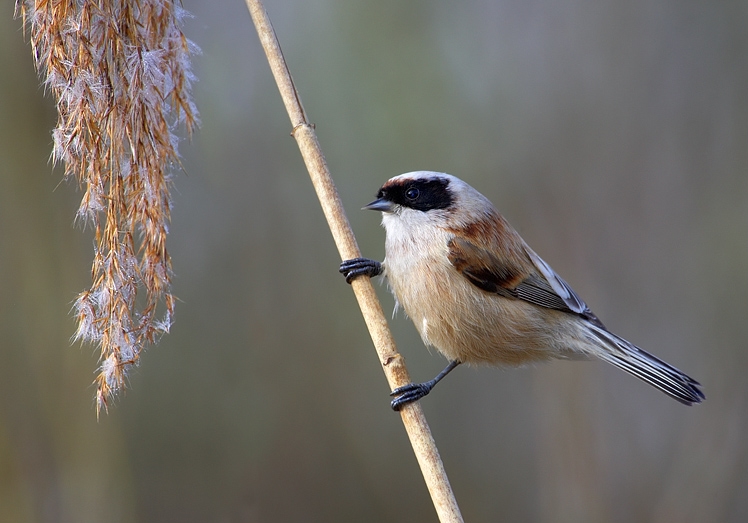 Beutelmeise ■■
Beutelmeise ■■ |
.
Automatically generated from Xeno-Canto recording
Call: |
♫

|
 Ortolan ■■
Ortolan ■■ |
.
Automatically generated from Xeno-Canto recording
Call: |
♫

|
 Steinschmätzer ■■
Steinschmätzer ■■ |
.
Automatically generated from Xeno-Canto recording
Call: | ♫ |
| einnotig | ||
| Raspel | ||
 Tannenhäher ■■
Tannenhäher ■■ |
Raspel einnotig slow low-high (1-10 KHz) .
- AlarmrufLike crow or its cousin the Eurasian jay (Eichelhaeher).
Call: | |
 Girlitz ■■
Girlitz ■■ |
.
Automatically generated from Xeno-Canto recording
Call: | ♫ |
 Baumpieper ■■
Baumpieper ■■ |
.
Automatically generated from Xeno-Canto recording
Call: | ♫ |
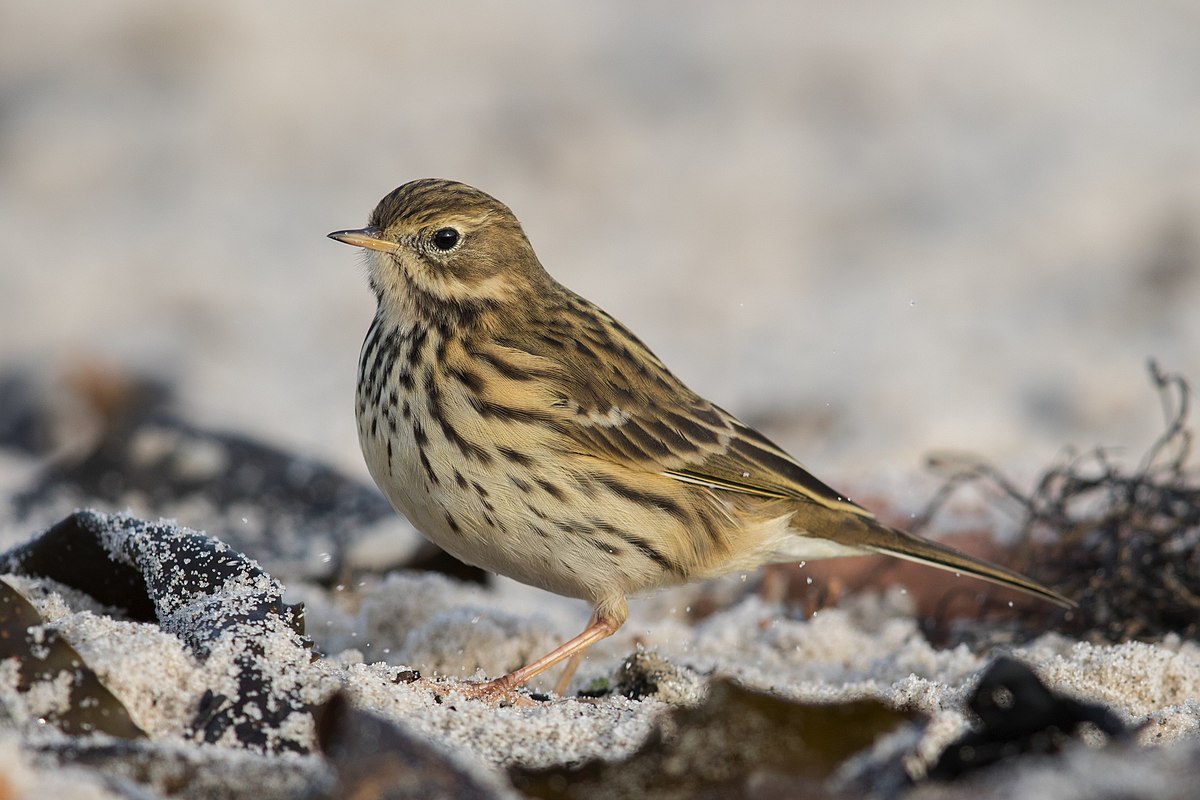 Wiesenpieper ■■
Wiesenpieper ■■ |
.
Automatically generated from Xeno-Canto recording
Call: | ♫ |
| einnotig | ||
| aufsteigend, stottern/kieseln | ||
|
|
aufsteigend, stottern/kieseln einnotig slow medium (4-5 KHz) .
XC560014 matches exactly what BirdID describes: 'Alarm call is a chat-like alternation between short, high-pitched "wit" sounds, and series of hard and dry "teck".' The high-pitched call I heard recently was between 5 and 6 KHz, which could help to distinguish between other birds with a deeper voice. The whooping call is sometimes listed as an alarm call.
Call: |
♫

|
| aufsteigend | ||
|
|
aufsteigend einnotig slow medium (2-5 KHz) .
- KontaktrufAt least in French, this is called the huit call. Not very consistent in tone from one note to another. Some stick to 3-4 or 3-4.5 KHz, others 2.5-5.5.
Call: |
♫

|
| stottern/kieseln | ||
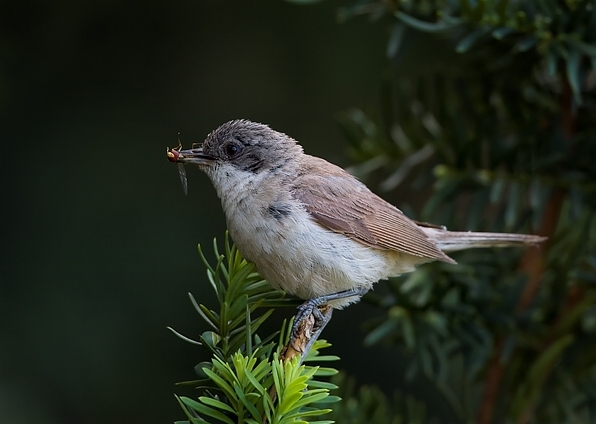 Klappergrasmücke ■■
Klappergrasmücke ■■ |
stottern/kieseln einnotig slow low-high (2-7 KHz) .
BirdID says: Warning call a hard "check" similar to Blackcap but slightly softer
Call: | ♫ |
|
|
stottern/kieseln einnotig slow high (3-9 KHz) .
General: Sputtery/stoney, but may have other calls too. Call: |
♫

|
|
|
.
Automatically generated from Xeno-Canto recording
Call: | ♫ |
 Braunkehlchen ■■
Braunkehlchen ■■ |
.
Automatically generated from Xeno-Canto recording
Call: | ♫ |
| einnotig | ||
 Eisvogel ■■
Eisvogel ■■ |
einnotig slow high (5-7 KHz) .
Common kingfisher call from Xeno-Canto, similar to one from NABU app.
Fairly high pitched single chirps or occasional high-low pairs.
Call: |
♫

|
 Blässhuhn ■■
Blässhuhn ■■ |
.
Automatically generated from Xeno-Canto recording
Call: | ♫ |
| einnotig | ||
| Raspel, absteigend | ||
|
|
Raspel, absteigend einnotig slow medium (1-5 KHz) .
Raspy descending note
Call: | ♫ |
 Bergfink ■■
Bergfink ■■ |
.
Automatically generated from Xeno-Canto recording
Call: |
♫

|
| einnotig | ||
|
|
einnotig slow high (7-10 KHz) .
- KontaktrufOne or two high chirps followed by long pause of 1-2 seconds
Call: | ♫ |
| nicht musikalisch | ||
| rasseln | ||
|
|
rasseln nicht musikalisch fast low-high (2-9 KHz) .
General: I mistook this one for a woodpecker the first time I heard it,
partly because BirdNet also did!
Rattle generated in vocal tract, not with the beak!
Call: | |
 Rotdrossel ■■
Rotdrossel ■■ |
.
Automatically generated from Xeno-Canto recording
Call: |
♫

|
|
|
.
Automatically generated from Xeno-Canto recording
Call: | ♫ |
| einfach rhythmisch | ||
| komisch | ||
|
|
komisch einfach rhythmisch fast low (1-3 KHz) .
Strange tone, Almost barking or a gull cry.
Call: Nabu: Ein hartes „kjack“ oder „schack“ sowie ein raues „tschräh“ hört man am häufigsten von der Dohle. Sie ist ein begabtes Stimmwunder und hat eine Vielzahl von Lauten und Imitationen auf Lager. [Link] |
♫

|
 Bartmeise ■■
Bartmeise ■■ |
einfach rhythmisch fast high (3-7 KHz) .
- GesangChirping
Call: |
♫

|
 Dorngrasmücke ■■
Dorngrasmücke ■■ |
.
Automatically generated from Xeno-Canto recording
Call: | ♫ |
|
|
.
Automatically generated from Xeno-Canto recording
Call: | ♫ |
| einnotig | ||
 Kernbeisser ■■
Kernbeisser ■■ |
einnotig fast high (4-8 KHz) .
Found no references to song
Call: |
♫

|
| nicht musikalisch | ||
 Silberreiher ■■
Silberreiher ■■ |
nicht musikalisch slow low (1-3 KHz) .
Partly an awkward quack: uck uck. Rattles. Deep-toned urrr. Higher-toned trill.
Call: |
♫

|
|
|
nicht musikalisch slow low (1-3 KHz) .
Almost a bark, low-pitched, little treble.
Call: | |
|
|
nicht musikalisch slow low (1-3 KHz) .
A little buzz/beep that sounds more like an appliance or app.
Call: | |
|
|
.
Automatically generated from Xeno-Canto recording
Call: | ♫ |
| einnotig | ||
| absteigend | ||
|
|
absteigend einnotig slow high (6-9 KHz) .
Falling note, relatively long, sometimes repeated - like the pee below without the choo?
Call: . [Link] |
♫

|
|
|
.
Automatically generated from Xeno-Canto recording
Call: | ♫ |
|
|
.
Automatically generated from Xeno-Canto recording
Call: | ♫ |
 Feldlerche ■■
Feldlerche ■■ |
.
Automatically generated from Xeno-Canto recording
Call: | ♫ |
| stereotypisch melodisch | ||
|
|
stereotypisch melodisch fast low-high (2-8 KHz) .
|
♫

|
 Fichtenkreuzschnabel ■■
Fichtenkreuzschnabel ■■ |
.
Automatically generated from Xeno-Canto recording
Call: | ♫ |
| einfach rhythmisch | ||
 Pirol ■■
Pirol ■■ |
einfach rhythmisch slow medium (1-5 KHz) .
3 somewhat harsh ascending notes, more melodic than a Eurasian jay call
Call: |
♫

|
|
|
.
Automatically generated from Xeno-Canto recording
Call: | ♫ |
| einfach rhythmisch | ||
| aufsteigend | ||
 Fitis ■■
Fitis ■■ |
aufsteigend einfach rhythmisch slow medium (2-4 KHz) .
- KontaktrufWhoop very similar to chiffchaff, etc. but starts at an even level, then ascends.
Call: |
♫

|
 Gartengrasmücke ■■
Gartengrasmücke ■■ |
.
Automatically generated from Xeno-Canto recording
Call: | ♫ |
|
|
.
Automatically generated from Xeno-Canto recording
Call: | ♫ |
|
|
.
Automatically generated from Xeno-Canto recording
Call: | ♫ |
|
|
.
Automatically generated from Xeno-Canto recording
Call: | ♫ |
 Schilfrohrsänger ■■
Schilfrohrsänger ■■ |
.
Automatically generated from Xeno-Canto recording
Call: | ♫ |
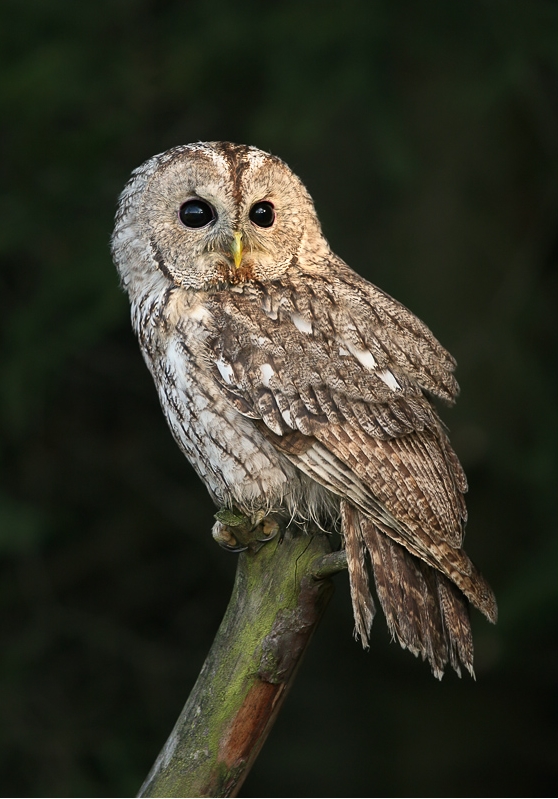 Waldkauz ■■
Waldkauz ■■ |
.
Automatically generated from Xeno-Canto recording
Call: | ♫ |
|
|
.
Automatically generated from Xeno-Canto recording
Call: | ♫ |
|
|
.
Automatically generated from Xeno-Canto recording
Call: | ♫ |
 Rohrammer ■■
Rohrammer ■■ |
.
Automatically generated from Xeno-Canto recording
Call: | ♫ |
|
|
.
Automatically generated from Xeno-Canto recording
Call: | ♫ |
| Flussseeschwalbe ■■ |
.
Automatically generated from Xeno-Canto recording
Call: | ♫ |
|
|
.
Automatically generated from Xeno-Canto recording
Call: | ♫ |
 Nachtigall ■■
Nachtigall ■■ |
.
Automatically generated from Xeno-Canto recording
Call: | ♫ |
| einfach rhythmisch | ||
|
|
einfach rhythmisch slow high (3-9 KHz) .
Analyze stuff at XC vs my BirdNet 962 - several notes, not sure if all coal tit as BirdNet suggested. XC has two-note high-low alarm call but simple song-like calls too
Call: | ♫ |
| einnotig | ||
|
|
einnotig slow high (5-7 KHz) .
General: See the sonogram how the song may descend rapidly from 7Khz to and then climb from 5 to 5.75 KHz, a kind of reversed checkmark. However I find it hard to distinguish from a single note. I'm not a bird ;-( Call: |
♫

|
 Waldbaumläufer ■■
Waldbaumläufer ■■ |
einnotig slow high (7-9 KHz) .
General: Wikipedia sagt: Sein Ruf klingt in etwa wie "siih" oder "tih". Fairly regularly spaced single tseep at 7-9KHz. Call: |
♫

|
| stottern/kieseln | ||
|
|
stottern/kieseln einnotig slow high (3-8 KHz) .
Sputtery/drippy/trilly repeated notes at 3-8 KHz. June 2022 heard check calls that were distinctly irregularly in their rhythm.
Call: | ♫ |
|
|
einnotig slow low-high (1-8 KHz) .
General: A chirping (that I couldn't associate in my mind with a woodpecker), repeated at somewhat irregular intervals of about a second 2023: klang in bird-song.ch Quiz wie eine lauter Haussperling Call: Nabu: Der häufigste Ruf ist ein kurzes und spitzes „kix“. Ist ein Buntspecht aufgebracht, etwa durch einen Artgenossen, kann man ein schnelles Schnarren hören. [Link] Call: |
♫

|
| einfach rhythmisch | ||
 Mittelspecht ■■
Mittelspecht ■■ |
einfach rhythmisch slow medium (0-4 KHz) .
|
♫

|
| einnotig | ||
 Schwarzspecht ■■
Schwarzspecht ■■ |
einnotig slow low-high (1-8 KHz) .
General: A loud unearthly call on a single unwavering note.
Call: Flight call a characteristic resonant trill "krrreekrrreekrrreekrrree". A characteristic short, sharp and plaintive "keeaaa" with descending pitch often uttered when excited. A few slower drawn-out introductory calls before the phrase gets going is diagnostic. [Link] |
♫

|
| einfach rhythmisch | ||
|
|
einfach rhythmisch fast high (3-9 KHz) .
Vogelwarte wie oben..hohe Rufreihen
Call: |
♫

|
| Grünspecht ■■ |
einfach rhythmisch slow high (3-9 KHz) .
Unheimliches Lachen.
Call: |
♫

|
| einnotig | ||
| Raspel | ||
|
|
Raspel einnotig slow medium (1-5 KHz) .
Typically harsh jay call. I would say a contact call usually means 'Here I am', answered by 'Good, here I am.' Listening to two jays in the Swiss mountains of Toggenburg, it sounded like 'HEY IDIOT, HERE I AM...WHERE THE HECK ARE YOU?' 'WHAT? YOU HAVEN'T FIGURE IT OUT? OF COURSE I'M OVER HERE. PEABRAIN.' On the other hand, anthropomorphism is always dangerous, usually completely wrong approach.
Call: | ♫ |
|
|
.
Automatically generated from Xeno-Canto recording
Call: | ♫ |
| einfach rhythmisch | ||
|
|
einfach rhythmisch slow high (3-9 KHz) .
Low-high-high, with lightly raspy start, rather high.
Call: | ♫ |
 Amsel ■■
Amsel ■■ |
einfach rhythmisch slow medium (1-5 KHz) .
- AlarmrufLoud falling series of notes, unlike anything else you hear from a blackbird
Call: |
♫

|
|
|
.
Automatically generated from Xeno-Canto recording
Call: | ♫ |
| nicht musikalisch | ||
| Krächzen | ||
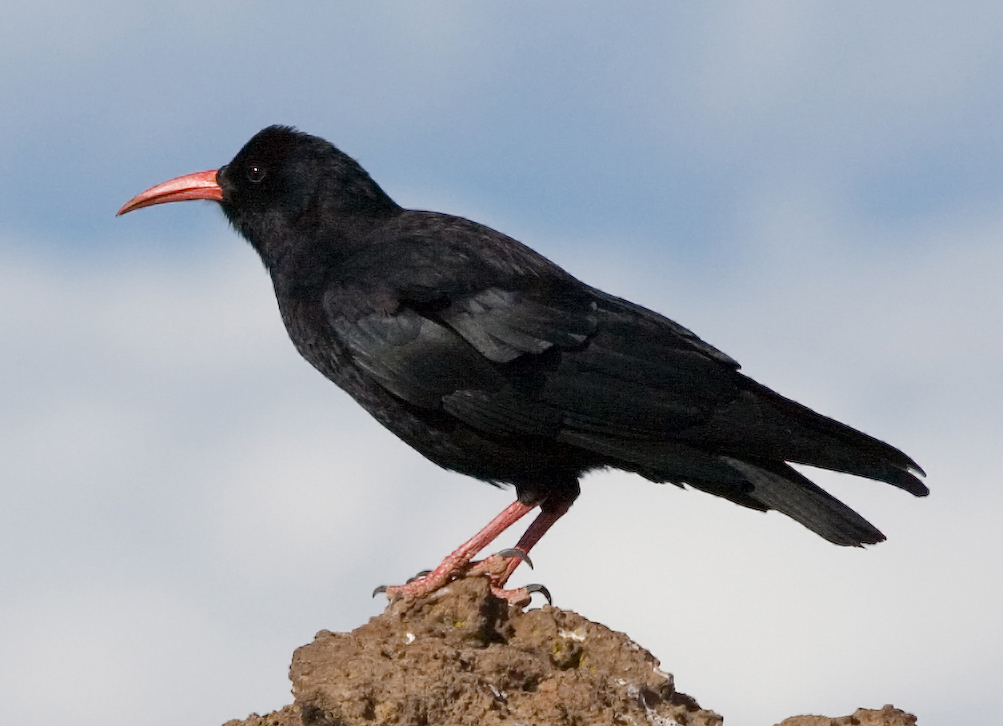 Alpenkrähe ■■
Alpenkrähe ■■ | Krächzen nicht musikalisch slow low (1-3 KHz) . Higher-pitched falling graak. Call: Ebird: Gives a variety of calls, including a loud “chaw!”, as well as higher-pitched gull-like mewing calls. [Link] |
♫

|
 Seidenschwanz ❑❑
Seidenschwanz ❑❑ |
.
Automatically generated from Xeno-Canto recording
Call: |
♫

|
 Kuckuck ■■
Kuckuck ■■ |
.
Automatically generated from Xeno-Canto recording
Call: |
♫

|
| nicht musikalisch | ||
| Krächzen | ||
 Nebelkrähe ■■
Nebelkrähe ■■ |
Krächzen nicht musikalisch slow medium (2-4 KHz) .
| |
| einnotig | ||
| aufsteigend | ||
|
|
aufsteigend einnotig slow medium (1-6 KHz) .
Das hoere ich ab und zu (und gern), der lange aufsteigende Pfeif von tief (1 1/2 KHz) bis hoch (6.5 KHz).
Call: | ♫ |
|
|
.
Automatically generated from Xeno-Canto recording
Call: | ♫ |
|
|
.
Automatically generated from Xeno-Canto recording
Call: | ♫ |
 Elster ■■
Elster ■■ |
.
Automatically generated from Xeno-Canto recording
Call: | ♫ |
| einfach rhythmisch | ||
 Kohlmeise ■■
Kohlmeise ■■ |
einfach rhythmisch fast low-high (1-7 KHz) .
Chuck-a-chuck-a-chuck, sometimes preceded by higher 'wheat!'
Call: |
♫

|
| einnotig | ||
|
|
einnotig fast low (2-3 KHz) .
Schnelle Sequenz - ist es der oben erwaehnte 'twit'?
Call: Other: It gives loud calls when excited, an abrupt ‘twit”, only one, or in slow series, but often in phrases of 3-4 notes in rapid succession. But in great excitement, it utters phrases of about ten notes per second!
We can also hear some shrill “sirrrr”, becoming harsher in alarm call. The contact call is a thin “tsit” uttered before to take off.
[Link] Other: Very varied voice. Ranging from very high pitched whistles and melodic resonant calls, to chattering and nasal mocking sounds. Characteristic warning call a hard "check" or "chwit", often in rapid series, like a pebble bouncing on hollow ice. [Link] |
♫

|
| stottern/kieseln | ||
|
|
stottern/kieseln einnotig slow high (4-9 KHz) .
Personal: A single note usually repeated twice. Somewhat sputtery. BirdID refers to 'a thin, electric "tick". In one source said to be used as alarm call. Call: | ♫ |
|
|
einnotig slow low (2-3 KHz) .
- Kontaktruflaconic 1 note call w slight dip? Song NABU 1 parakeet like puppy-dog whining, NABU 2 whistles, 2-syllable peek-a-boo, ...
Call: |
♫

|
| aufsteigend | ||
|
|
aufsteigend einnotig slow medium (2-4 KHz) .
Repeated rising note, not too loud
Call: |
♫

|
|
|
einnotig slow high (3-7 KHz) .
Single note repeated
Call: |
♫

|
| absteigend | ||
|
|
absteigend einnotig slow high (3-9 KHz) .
General: Single note repeated Song: |
♫

|
 Feldsperling ■■
Feldsperling ■■ |
.
Automatically generated from Xeno-Canto recording
Call: |
♫

|
|
| . Automatically generated from Xeno-Canto recording Call: Other: Der uebliche Ruf hat 5 Gurrlaute: 2+1+2, verglichen mit der Tuerkentaube mit 3 = 2+1 [Link] | ♫ |
| einnotig | ||
| absteigend | ||
 Heckenbraunelle ■■
Heckenbraunelle ■■ |
absteigend einnotig fast high (5-7 KHz) .
Swooping staccato call 0.5 seconds long heard near Lendikon. Repeated irregularly after 1-3.5 seconds.
Call: |
♫

|
|
|
.
- FlugrufAutomatically generated from Xeno-Canto recording
Call: | ♫ |
|
|
.
Automatically generated from Xeno-Canto recording
Call: | ♫ |
|
|
.
Automatically generated from Xeno-Canto recording
Call: | ♫ |
|
|
.
Automatically generated from Xeno-Canto recording
Call: |
♫

|
| nicht musikalisch | ||
|
|
nicht musikalisch slow low (1-3 KHz) .
General: Mechanical-sounding sort-of-a-quack Call: |
♫

|
| stereotypisch melodisch | ||
 Grauschnäpper ■■
Grauschnäpper ■■ |
stereotypisch melodisch slow high (4-7 KHz) .
General: To me something between a one-note and an extremely simple melody, namely med-med chk-hi-med-med, with a very irregular speed, not at all like a metronome. Call: |
♫

|
| einnotig | ||
|
|
einnotig slow high (4-7 KHz) .
Chirp repeated 1-2s.
Call: |
♫

|
|
|
.
Automatically generated from Xeno-Canto recording
Call: | ♫ |
|
|
.
- FlugrufAutomatically generated from Xeno-Canto recording
Call: |
♫

|
|
|
.
Automatically generated from Xeno-Canto recording
Call: | ♫ |
|
|
.
Automatically generated from Xeno-Canto recording
Call: | ♫ |
|
|
.
- FlugrufAutomatically generated from Xeno-Canto recording
Call: |
♫

|
 Bruchwasserläufer ■■
Bruchwasserläufer ■■ |
.
Automatically generated from Xeno-Canto recording
Call: | ♫ |
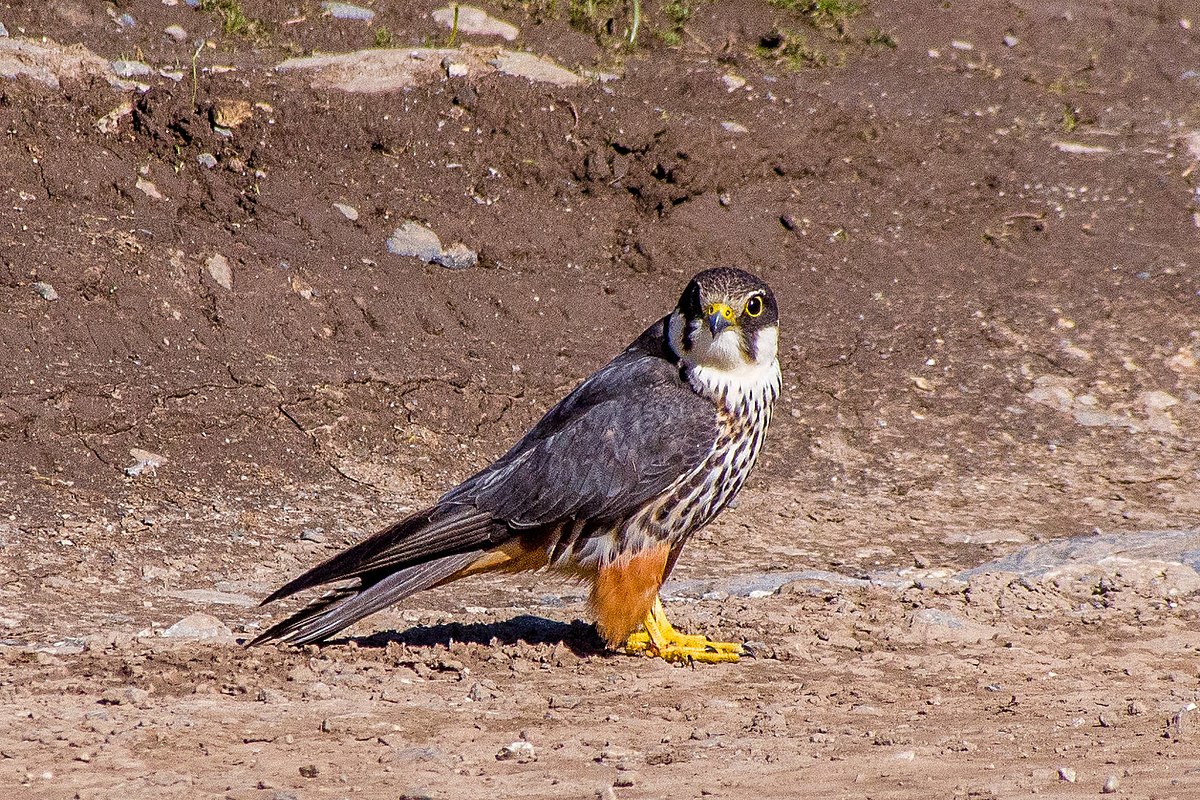 Baumfalke ■■
Baumfalke ■■ |
.
Automatically generated from Xeno-Canto recording
Call: | ♫ |
|
|
.
- FlugrufAutomatically generated from Xeno-Canto recording
Call: |
♫

|
|
|
.
Automatically generated from Xeno-Canto recording
Call: | ♫ |
 Provencegrasmücke
Provencegrasmücke |
.
Automatically generated from Xeno-Canto recording
Call: | ♫ |
Uebung
♫ Lösung
Orthotomus sutorius XC862837 - Common Tailorbird - Orthotomus sutorius - call, Chiang Rai, Thailand.
♫
Lösung
Orthotomus sutorius XC862837 - Common Tailorbird - Orthotomus sutorius - call, Chiang Rai, Thailand.
♫
 Lösung
Kohlmeise Call from Xeno-Canto Illustrates higher 'wheat' before the 'chuck-a-chuck'
♫
Lösung
Kohlmeise Call from Xeno-Canto Illustrates higher 'wheat' before the 'chuck-a-chuck'
♫
 Lösung
Grauschnäpper XC656714 - Spotted Flycatcher - Muscicapa striata - Sounds similar to what I know.
♫
Lösung
Grauschnäpper XC656714 - Spotted Flycatcher - Muscicapa striata - Sounds similar to what I know.
♫
 Lösung
Eisvogel Call from Xeno-Canto
♫
Lösung
Wiesenpieper
♫
Lösung
Meisenwaldsänger
♫
Lösung
Eisvogel Call from Xeno-Canto
♫
Lösung
Wiesenpieper
♫
Lösung
Meisenwaldsänger
♫
 Lösung
Bacchusreiher XC794055 - Chinese Pond Heron - Ardeola bacchus - flight call - Mai Po Nature Reserve, New Territories, Hong Kong, China.
♫
Lösung
Kanadagans
♫
Lösung
Feldlerche
♫
Lösung
Contopus virens
♫
Lösung
Bacchusreiher XC794055 - Chinese Pond Heron - Ardeola bacchus - flight call - Mai Po Nature Reserve, New Territories, Hong Kong, China.
♫
Lösung
Kanadagans
♫
Lösung
Feldlerche
♫
Lösung
Contopus virens
♫
 Lösung
Pirol
♫
Lösung
Pirol
♫
 Lösung
Prinia hodgsonii XC547181 - Grey-breasted Prinia - Prinia hodgsonii erro.
♫
Lösung
Prinia hodgsonii XC547181 - Grey-breasted Prinia - Prinia hodgsonii erro.
♫
 Lösung
Dreizehenspecht
♫
Lösung
Dreizehenspecht
♫
 Lösung
Bergfink XC731031 - Brambling - Fringilla montifringilla.
♫
Lösung
Bergfink XC731031 - Brambling - Fringilla montifringilla.
♫
 Lösung
Rotohrbülbül XC776525 - Red-whiskered Bulbul - Pycnonotus jocosus pattani.
♫
Lösung
Schilfrohrsänger Pfäffikersee schilfrohrsänger vielleicht.
♫
Lösung
Zaunkönig XC195946 Eurasian wren call.
♫
Lösung
Weidenmeise Willow tit st moritz.
♫
Lösung
Rotohrbülbül XC776525 - Red-whiskered Bulbul - Pycnonotus jocosus pattani.
♫
Lösung
Schilfrohrsänger Pfäffikersee schilfrohrsänger vielleicht.
♫
Lösung
Zaunkönig XC195946 Eurasian wren call.
♫
Lösung
Weidenmeise Willow tit st moritz.
♫
 Lösung
Bartmeise
♫
Lösung
Bartmeise
♫
 Lösung
Alpenkrähe XC417702 - Red-billed Chough - Pyrrhocorax pyrrhocorax - flight call recorded in Spain.
♫
Lösung
Alpenkrähe XC417702 - Red-billed Chough - Pyrrhocorax pyrrhocorax - flight call recorded in Spain.
♫
 Lösung
Graureiher XC876171 - Grey Heron - Ardea cinerea - call - Manyeleti Game Reserve, South Africa.
♫
Lösung
Graureiher XC876171 - Grey Heron - Ardea cinerea - call - Manyeleti Game Reserve, South Africa.
♫
 Lösung
Kuckuck XC801215 - Common Cuckoo - Cuculus canorus.
♫
Lösung
Wendehals Wendehals, bolle magadino.
♫
Lösung
Trauerschnäpper
♫
Lösung
Provencegrasmücke
♫
Lösung
Grauammer
♫
Lösung
Türkentaube Türkentaube.
♫
Lösung
Kuckuck XC801215 - Common Cuckoo - Cuculus canorus.
♫
Lösung
Wendehals Wendehals, bolle magadino.
♫
Lösung
Trauerschnäpper
♫
Lösung
Provencegrasmücke
♫
Lösung
Grauammer
♫
Lösung
Türkentaube Türkentaube.
♫
 Lösung
Fitis Call recorded in UK, sounds typical to me, and spiced up by a yellowhammer in the background and several other birds
♫
Lösung
Fitis Call recorded in UK, sounds typical to me, and spiced up by a yellowhammer in the background and several other birds
♫
 Lösung
Birkhuhn XC731604 - Black Grouse - Lyrurus tetrix.
♫
Lösung
Schnäpperwaldsänger
♫
Lösung
Birkhuhn XC731604 - Black Grouse - Lyrurus tetrix.
♫
Lösung
Schnäpperwaldsänger
♫
 Lösung
Afrikanische Schwarzkehlchen XC710467 - European Stonechat - Saxicola rubicola rubicola.
♫
Lösung
Afrikanische Schwarzkehlchen XC710467 - European Stonechat - Saxicola rubicola rubicola.
♫
 Lösung
Furchenhornvogel XC292842 - Wreathed Hornbill - Rhyticeros undulatus - barking call - Borneo, Malaysia.
♫
Lösung
Gelbschnabel-Sturmtaucher Cory's Shearwaters meowing at Hotel Jardin Tecina in Playa Santiago, La Gomera edited down.
♫
Lösung
Dorngrasmücke Dorngrasmücke buzzy calls.
♫
Lösung
Goldammer
♫
Lösung
Furchenhornvogel XC292842 - Wreathed Hornbill - Rhyticeros undulatus - barking call - Borneo, Malaysia.
♫
Lösung
Gelbschnabel-Sturmtaucher Cory's Shearwaters meowing at Hotel Jardin Tecina in Playa Santiago, La Gomera edited down.
♫
Lösung
Dorngrasmücke Dorngrasmücke buzzy calls.
♫
Lösung
Goldammer
♫
 Lösung
Sperbertaube XC844626 - Zebra Dove - Geopelia striata.
♫
Lösung
Zistensänger
♫
Lösung
Elster
♫
Lösung
Rotaugenvireo Supposedly red eyed vireo at ncr trail, did not see.
♫
Lösung
Sperbertaube XC844626 - Zebra Dove - Geopelia striata.
♫
Lösung
Zistensänger
♫
Lösung
Elster
♫
Lösung
Rotaugenvireo Supposedly red eyed vireo at ncr trail, did not see.
♫
 Lösung
Hausrotschwanz
♫
Lösung
Fichtenkreuzschnabel
♫
Lösung
Säbelschnäbler
♫
Lösung
Turmfalke
♫
Lösung
Hausrotschwanz
♫
Lösung
Fichtenkreuzschnabel
♫
Lösung
Säbelschnäbler
♫
Lösung
Turmfalke
♫
 Lösung
Acridotheres tristis XC729094 - Common Myna - Acridotheres tristis tristis.
♫
Lösung
Acridotheres tristis XC729094 - Common Myna - Acridotheres tristis tristis.
♫
 Lösung
Pazifiksegler XC485667 - Pacific Swift - Apus pacificus - flight call, Buryatia, Russian Federation.
♫
Lösung
Waldkauz Waldkauz in Carona.
♫
Lösung
Tannenmeise
♫
Lösung
Pazifiksegler XC485667 - Pacific Swift - Apus pacificus - flight call, Buryatia, Russian Federation.
♫
Lösung
Waldkauz Waldkauz in Carona.
♫
Lösung
Tannenmeise
♫
 Lösung
Turteltaube XC728296 - European Turtle Dove - Streptopelia turtur.
♫
Lösung
Turteltaube XC728296 - European Turtle Dove - Streptopelia turtur.
♫
 Lösung
Waldbaumläufer XC206282 Eurasian treecreeper call.
♫
Lösung
Waldbaumläufer XC206282 Eurasian treecreeper call.
♫
 Lösung
Gartenbaumläufer A recording from Jorge Leitão in the Netherlands that I assume is the tyt tyt call.
♫
Lösung
Gartenbaumläufer A recording from Jorge Leitão in the Netherlands that I assume is the tyt tyt call.
♫
 Lösung
Seidenschwanz XC763124 - Bohemian Waxwing - Bombycilla garrulus - call recorded in Sweden.
♫
Lösung
Seidenschwanz XC763124 - Bohemian Waxwing - Bombycilla garrulus - call recorded in Sweden.
♫
 Lösung
Dickschnabelkrähe XC854761 - Large-billed Crow - Corvus macrorhynchos.
♫
Lösung
Dickschnabelkrähe XC854761 - Large-billed Crow - Corvus macrorhynchos.
♫
 Lösung
Buchfink Rain call from XenoCanto Recorded by Paul Driver in Mundford, Norfolk, UK
♫
Lösung
Amerikanerkrähe
♫
Lösung
Buchfink Rain call from XenoCanto Recorded by Paul Driver in Mundford, Norfolk, UK
♫
Lösung
Amerikanerkrähe
♫
 Lösung
Ortolan XC652668 - Ortolan Bunting - Emberiza hortulana - first 4 or so hl, then a lower note - seems the close is highly variable.
♫
Lösung
Ortolan XC652668 - Ortolan Bunting - Emberiza hortulana - first 4 or so hl, then a lower note - seems the close is highly variable.
♫
 Lösung
Schlangenweihe XC762002 - Crested Serpent Eagle - Spilornis cheela - alarm call, Shanghai Zoo, Shanghai Shi, China.
♫
Lösung
Schlangenweihe XC762002 - Crested Serpent Eagle - Spilornis cheela - alarm call, Shanghai Zoo, Shanghai Shi, China.
♫
 Lösung
Gartenrotschwanz
♫
Lösung
Gartenrotschwanz
♫
 Lösung
Rotdrossel XC320315 - Redwing - Turdus iliacus.
♫
Lösung
Klappergrasmücke
♫
Lösung
Rotdrossel XC320315 - Redwing - Turdus iliacus.
♫
Lösung
Klappergrasmücke
♫
 Lösung
Grünspecht
♫
Lösung
Grünspecht
♫
 Lösung
Stieglitz Xeno-Canto recording Adult call recorded in the UK.
♫
Lösung
Stieglitz Xeno-Canto recording Adult call recorded in the UK.
♫
 Lösung
Sommergoldhähnchen (alternate)
♫
Lösung
Helmspecht
♫
Lösung
Sommergoldhähnchen (alternate)
♫
Lösung
Helmspecht
♫
 Lösung
Dreifarbenweih XC187025 - Black Baza - Aviceda leuphotes - flight call.
♫
Lösung
Dreifarbenweih XC187025 - Black Baza - Aviceda leuphotes - flight call.
♫
 Lösung
Amsel XC557335 common blackbird alarm call.
♫
Lösung
Amsel XC557335 common blackbird alarm call.
♫
 Lösung
Schafstelze
♫
Lösung
Schafstelze
♫
 Lösung
Dickschnabelspötter XC805623 - Thick-billed Warbler - Arundinax aedon.
♫
Lösung
Dickschnabelspötter XC805623 - Thick-billed Warbler - Arundinax aedon.
♫
 Lösung
Mönchsgrasmücke XC546030 black cap warbler so-called tac and djii call.
♫
Lösung
Mönchsgrasmücke XC546030 black cap warbler so-called tac and djii call.
♫
 Lösung
Bachstelze
♫
Lösung
Kanarenmeise
♫
Lösung
Ringeltaube
♫
Lösung
Gartenspottdrossel Probably northern mockingbird at Silversage Court, Hunt Valley.
♫
Lösung
Blauhäher
♫
Lösung
Rotkehlchen I heard 3 or 4 scattered birds calling it in woods with underbrush but saw no birds. BirdNet told me they were robins, which I found hard to believe, but on comparing it with recordings at XenoCanto, I was convinced! Maybe they were telling each other "Don't show yourself to that alarming guy!".
♫
Lösung
Haussperling
♫
Lösung
Weissstorch
♫
Lösung
Indianermeise
♫
Lösung
Troglodytes aedon
♫
Lösung
Zonotrichia albicollis
♫
Lösung
Bachstelze
♫
Lösung
Kanarenmeise
♫
Lösung
Ringeltaube
♫
Lösung
Gartenspottdrossel Probably northern mockingbird at Silversage Court, Hunt Valley.
♫
Lösung
Blauhäher
♫
Lösung
Rotkehlchen I heard 3 or 4 scattered birds calling it in woods with underbrush but saw no birds. BirdNet told me they were robins, which I found hard to believe, but on comparing it with recordings at XenoCanto, I was convinced! Maybe they were telling each other "Don't show yourself to that alarming guy!".
♫
Lösung
Haussperling
♫
Lösung
Weissstorch
♫
Lösung
Indianermeise
♫
Lösung
Troglodytes aedon
♫
Lösung
Zonotrichia albicollis
♫
 Lösung
Sperber XC818384 - Eurasian Sparrowhawk - Accipiter nisus - call, Brandenburg, Germany.
♫
Lösung
Goldspecht
♫
Lösung
Erlenzeisig
♫
Lösung
Schwarzmilan
♫
Lösung
Myiarchus crinitus
♫
Lösung
Alpendohle
♫
Lösung
Sperber XC818384 - Eurasian Sparrowhawk - Accipiter nisus - call, Brandenburg, Germany.
♫
Lösung
Goldspecht
♫
Lösung
Erlenzeisig
♫
Lösung
Schwarzmilan
♫
Lösung
Myiarchus crinitus
♫
Lösung
Alpendohle
♫
 Lösung
Grauspecht
♫
Lösung
Braunkehlchen
♫
Lösung
Rohrammer
♫
Lösung
Teichrohrsänger Teichrohrsänger wahrscheinlich, siehe Foto.
♫
Lösung
Grauspecht
♫
Lösung
Braunkehlchen
♫
Lösung
Rohrammer
♫
Lösung
Teichrohrsänger Teichrohrsänger wahrscheinlich, siehe Foto.
♫
 Lösung
Purpurreiher XC878038 - Purple Heron - Ardea purpurea manilensis - flight call - Nonthaburi, Thailand.
♫
Lösung
Carolinaspecht
♫
Lösung
Eichelhäher XC536051 Eurasian Jay harsh call 20s.
♫
Lösung
Grünfink
♫
Lösung
Vireo griseus
♫
Lösung
Purpurreiher XC878038 - Purple Heron - Ardea purpurea manilensis - flight call - Nonthaburi, Thailand.
♫
Lösung
Carolinaspecht
♫
Lösung
Eichelhäher XC536051 Eurasian Jay harsh call 20s.
♫
Lösung
Grünfink
♫
Lösung
Vireo griseus
♫
 Lösung
Kleiber Long fast sequence of identical whoops, possibly 'twit' call.
♫
Lösung
Weißbauch-Phoebetyrann
♫
Lösung
Kleiber Long fast sequence of identical whoops, possibly 'twit' call.
♫
Lösung
Weißbauch-Phoebetyrann
♫
 Lösung
Schwanzmeise Flight call from XenoCanto
♫
Lösung
Rohrschwirl
♫
Lösung
Blaumerle
♫
Lösung
Schwanzmeise Flight call from XenoCanto
♫
Lösung
Rohrschwirl
♫
Lösung
Blaumerle
♫
 Lösung
Krickente Krickente Ruf von XenoCanto
♫
Lösung
Krickente Krickente Ruf von XenoCanto
♫
 Lösung
Silberreiher XC751146 - Great Egret - Ardea alba - call and flight call - Shanghai, China.
♫
Lösung
Zaunammer
♫
Lösung
Silberreiher XC751146 - Great Egret - Ardea alba - call and flight call - Shanghai, China.
♫
Lösung
Zaunammer
♫
 Lösung
Buntspecht Great spotted woodpecker call
♫
Lösung
Berglaubsänger
♫
Lösung
Girlitz
♫
Lösung
Dohlengrackel
♫
Lösung
Rauchschwalbe Barn swallows on the hunt, some quite high.
♫
Lösung
Buntspecht Great spotted woodpecker call
♫
Lösung
Berglaubsänger
♫
Lösung
Girlitz
♫
Lösung
Dohlengrackel
♫
Lösung
Rauchschwalbe Barn swallows on the hunt, some quite high.
♫
 Lösung
Silberklaffschnabel XC369048 - Asian Openbill - Anastomus oscitans.
♫
Lösung
Silberklaffschnabel XC369048 - Asian Openbill - Anastomus oscitans.
♫
 Lösung
Stelzenläufer XC863470 - Black-winged Stilt - Himantopus himantopus - flight call, a squeaky yapping - Camargue, France.
♫
Lösung
Steinschmätzer
♫
Lösung
Stelzenläufer XC863470 - Black-winged Stilt - Himantopus himantopus - flight call, a squeaky yapping - Camargue, France.
♫
Lösung
Steinschmätzer
♫
 Lösung
Sumpfmeise Call from Xeno-Canto
♫
Lösung
Sumpfmeise Call from Xeno-Canto
♫
 Lösung
Pfeifente Pfeifente von XenoCanto
♫
Lösung
Rotspottdrossel
♫
Lösung
Blässhuhn Taucherli Pfaeffikersee.
♫
Lösung
Mehlschwalbe
♫
Lösung
Pfeifente Pfeifente von XenoCanto
♫
Lösung
Rotspottdrossel
♫
Lösung
Blässhuhn Taucherli Pfaeffikersee.
♫
Lösung
Mehlschwalbe
♫
 Lösung
Aaskrähe XC762056 - Hooded Crow - Corvus cornix - call recorded in Germany.
♫
Lösung
Schwirrammer
♫
Lösung
Bruchwasserläufer
♫
Lösung
Baumfalke
♫
Lösung
Aaskrähe XC762056 - Hooded Crow - Corvus cornix - call recorded in Germany.
♫
Lösung
Schwirrammer
♫
Lösung
Bruchwasserläufer
♫
Lösung
Baumfalke
♫
 Lösung
Kuhreiher XC353848 - Western Cattle Egret - Bubulcus ibis - flight call - sevilla, andalucía, Spain.
♫
Lösung
Lachmöwe
♫
Lösung
Kuhreiher XC353848 - Western Cattle Egret - Bubulcus ibis - flight call - sevilla, andalucía, Spain.
♫
Lösung
Lachmöwe
♫
 Lösung
Mittelspecht
♫
Lösung
Mittelspecht
♫
 Lösung
Feldsperling XC558751-Feldsperling.
♫
Lösung
Feldsperling XC558751-Feldsperling.
♫
 Lösung
Kolkrabe XC779842 - Northern Raven - Corvus corax corax - call recorded in Sweden.
♫
Lösung
Kolkrabe XC779842 - Northern Raven - Corvus corax corax - call recorded in Sweden.
♫
 Lösung
Schwarzspecht Erschrenkender Ruf Source as noted in xeno-canto: Recordist Bodo Sonnenburg
2021-10-11 07:26
Latitude 52.2333
Longitude 13.8365
Location Oder-Spree (near Storkow (Mark)), Brandenburg
Country Germany
Elevation 40 m
♫
Lösung
Schwarzspecht Erschrenkender Ruf Source as noted in xeno-canto: Recordist Bodo Sonnenburg
2021-10-11 07:26
Latitude 52.2333
Longitude 13.8365
Location Oder-Spree (near Storkow (Mark)), Brandenburg
Country Germany
Elevation 40 m
♫
 Lösung
Kernbeisser
♫
Lösung
Kernbeisser
♫
 Lösung
Zilpzalp
♫
Lösung
Zilpzalp
♫
 Lösung
Aerodramus germani XC855353 - Germain's Swiftlet - Aerodramus germani - call - Nong Pen, Vientiane Prefecture, Laos.
♫
Lösung
Drosselrohrsänger Drosselrohrsänger.
♫
Lösung
Mäusebussard
♫
Lösung
Aerodramus germani XC855353 - Germain's Swiftlet - Aerodramus germani - call - Nong Pen, Vientiane Prefecture, Laos.
♫
Lösung
Drosselrohrsänger Drosselrohrsänger.
♫
Lösung
Mäusebussard
♫
 Lösung
Bayaweber XC825824 - Baya Weaver - Ploceus philippinus angelorum - call flock of 75-100 - Chiang Rai, Thailand.
♫
Lösung
Bayaweber XC825824 - Baya Weaver - Ploceus philippinus angelorum - call flock of 75-100 - Chiang Rai, Thailand.
♫
 Lösung
Graukopfkiebitz XC114440 - Grey-headed Lapwing - Vanellus cinereus - call, Inner Mongolia, nr Tumuji Town, China.
♫
Lösung
Graukopfkiebitz XC114440 - Grey-headed Lapwing - Vanellus cinereus - call, Inner Mongolia, nr Tumuji Town, China.
♫
 Lösung
Streifenkauz XC696582 - Barred Owl monkey call - Strix varia.
♫
Lösung
Bergpieper
♫
Lösung
Streifenkauz XC696582 - Barred Owl monkey call - Strix varia.
♫
Lösung
Bergpieper
♫
 Lösung
Seidenreiher XC799679 - Little Egret - Egretta garzetta - call that sounds like its vomiting - Catalunya, Spain.
♫
Lösung
Westliche Weissbart-Grasmücke
♫
Lösung
Sturnella magna
♫
Lösung
Star
♫
Lösung
Seidenreiher XC799679 - Little Egret - Egretta garzetta - call that sounds like its vomiting - Catalunya, Spain.
♫
Lösung
Westliche Weissbart-Grasmücke
♫
Lösung
Sturnella magna
♫
Lösung
Star
♫
 Lösung
Heidelerche XC741579 - Woodlark - Lullula arborea - four note call recorded in Sweden.
♫
Lösung
Wintergoldhähnchen
♫
Lösung
Sumpfrohrsänger Sumpfrohrsaenger, Kaltbrunnerriet.
♫
Lösung
Gänsesäger
♫
Lösung
Blaumückenfänger
♫
Lösung
Katzendrossel
♫
Lösung
Carolinazaunkönig Carolina wren sings Figaro.
♫
Lösung
Blaumeise
♫
Lösung
Nachtigall
♫
Lösung
Heidelerche XC741579 - Woodlark - Lullula arborea - four note call recorded in Sweden.
♫
Lösung
Wintergoldhähnchen
♫
Lösung
Sumpfrohrsänger Sumpfrohrsaenger, Kaltbrunnerriet.
♫
Lösung
Gänsesäger
♫
Lösung
Blaumückenfänger
♫
Lösung
Katzendrossel
♫
Lösung
Carolinazaunkönig Carolina wren sings Figaro.
♫
Lösung
Blaumeise
♫
Lösung
Nachtigall
♫
 Lösung
Cypsiurus balasiensis XC642524 - Asian Palm Swift - Cypsiurus balasiensis infumatus - flight call - Vientiane, Laos.
♫
Lösung
Gartengrasmücke Gartengrasmuecke, Kaltbrunnerriet.
♫
Lösung
Cypsiurus balasiensis XC642524 - Asian Palm Swift - Cypsiurus balasiensis infumatus - flight call - Vientiane, Laos.
♫
Lösung
Gartengrasmücke Gartengrasmuecke, Kaltbrunnerriet.
♫
 Lösung
Beutelmeise XC770243 - Eurasian Penduline Tit - Remiz pendulinus - call with a single swoop repeated about every 2 seconds.
♫
Lösung
Orpheusspötter
♫
Lösung
Rotflügelstärling
♫
Lösung
Rotmilan Rotmilan.
♫
Lösung
Kabylenkleiber
♫
Lösung
Rotkardinal
♫
Lösung
Beutelmeise XC770243 - Eurasian Penduline Tit - Remiz pendulinus - call with a single swoop repeated about every 2 seconds.
♫
Lösung
Orpheusspötter
♫
Lösung
Rotflügelstärling
♫
Lösung
Rotmilan Rotmilan.
♫
Lösung
Kabylenkleiber
♫
Lösung
Rotkardinal
♫
 Lösung
Mittelreiher XC460203 - Intermediate Egret - Ardea intermedia - call - Bharatpur, Rajasthan, India.
♫
Lösung
Mittelreiher XC460203 - Intermediate Egret - Ardea intermedia - call - Bharatpur, Rajasthan, India.
♫
 Lösung
Italiensperling XC729736 - Italian Sparrow - Passer italiae - typical sparrowish swoop or fast falling 3-note call.
♫
Lösung
Alpensegler
♫
Lösung
Italiensperling XC729736 - Italian Sparrow - Passer italiae - typical sparrowish swoop or fast falling 3-note call.
♫
Lösung
Alpensegler
♫
 Lösung
Gimpel
♫
Lösung
Gimpel
♫
 Lösung
Braunkopfspint XC639690 - Chestnut-headed Bee-eater - Merops leschenaulti leschenaulti - call - Doi Inthanon National Park, Thailand.
♫
Lösung
Braunkopfspint XC639690 - Chestnut-headed Bee-eater - Merops leschenaulti leschenaulti - call - Doi Inthanon National Park, Thailand.
♫
 Lösung
Anhinga melanogaster XC311148 - Oriental Darter - Anhinga melanogaster - quacky call - Tissamaharama area, Sri Lanka.
♫
Lösung
Haubentaucher
♫
Lösung
Anhinga melanogaster XC311148 - Oriental Darter - Anhinga melanogaster - quacky call - Tissamaharama area, Sri Lanka.
♫
Lösung
Haubentaucher
♫
 Lösung
Heckenbraunelle
♫
Lösung
Heckenbraunelle
♫
 Lösung
Buntstorch XC460217 - Painted Stork - Mycteria leucocephala - plaintive, abrasive call - Keoladeo National Park, Bharatpur, Rajasthan, India.
♫
Lösung
Steinlerche
♫
Lösung
Schwarzkehlchen
♫
Lösung
Buntstorch XC460217 - Painted Stork - Mycteria leucocephala - plaintive, abrasive call - Keoladeo National Park, Bharatpur, Rajasthan, India.
♫
Lösung
Steinlerche
♫
Lösung
Schwarzkehlchen
♫
 Lösung
Wasseramsel XC528686-Wasseramsel call.
♫
Lösung
Flussseeschwalbe
♫
Lösung
Rußspecht
♫
Lösung
Wanderdrossel
♫
Lösung
Wasseramsel XC528686-Wasseramsel call.
♫
Lösung
Flussseeschwalbe
♫
Lösung
Rußspecht
♫
Lösung
Wanderdrossel
♫
 Lösung
Kleinspecht
♫
Lösung
Sichelhopf Bill laeuft Richtung Singdrossel bei der Waldhuette in Fehraltorf.
♫
Lösung
Hausgimpel
♫
Lösung
Kleinspecht
♫
Lösung
Sichelhopf Bill laeuft Richtung Singdrossel bei der Waldhuette in Fehraltorf.
♫
Lösung
Hausgimpel
♫
 Lösung
Dohle
♫
Lösung
Singammer Song sparrow, Cherrywood Court.
♫
Lösung
Dohle
♫
Lösung
Singammer Song sparrow, Cherrywood Court.
♫
 Lösung
Perlhalstaube XC884362 - Spotted Dove - Spilopelia chinensis.
♫
Lösung
Perlhalstaube XC884362 - Spotted Dove - Spilopelia chinensis.
♫
 Lösung
Grosser Brachvogel
♫
Lösung
Fischadler 2023-10-12 15 55 surprising sound of an osprey.
♫
Lösung
Singdrossel XC570136 song thrush alarm call.
♫
Lösung
Wacholderdrossel
♫
Lösung
Kapuzenwaldsänger
♫
Lösung
Poecile carolinensis
♫
Lösung
Seidensänger
♫
Lösung
Neuntöter
♫
Lösung
Grosser Brachvogel
♫
Lösung
Fischadler 2023-10-12 15 55 surprising sound of an osprey.
♫
Lösung
Singdrossel XC570136 song thrush alarm call.
♫
Lösung
Wacholderdrossel
♫
Lösung
Kapuzenwaldsänger
♫
Lösung
Poecile carolinensis
♫
Lösung
Seidensänger
♫
Lösung
Neuntöter
♫
 Lösung
Weissbart-Seeschwalbe XC770351 - Whiskered Tern - Chlidonias hybrida - call, flight call - Heves County, Hungary.
♫
Lösung
Kormoran
♫
Lösung
Weissbart-Seeschwalbe XC770351 - Whiskered Tern - Chlidonias hybrida - call, flight call - Heves County, Hungary.
♫
Lösung
Kormoran
♫
 Lösung
Flussregenpfeifer XC835676 - Little Ringed Plover - Charadrius dubius - flight call, song - Dundgovi, Mongolia.
♫
Lösung
Schnatterente Schnatterenten, Moewen und an 29 Sekunden eindeutig ein Jet von Swiss, da wir in Neeracherried sehr nach am Kloten Flughafen sind, BirdNet schlaegt auch Teichrohrsaenger vor, wie auch ein Moewe-Typ aus Kalifornien.
♫
Lösung
Baumpieper
♫
Lösung
Carolinataube
♫
Lösung
Flussregenpfeifer XC835676 - Little Ringed Plover - Charadrius dubius - flight call, song - Dundgovi, Mongolia.
♫
Lösung
Schnatterente Schnatterenten, Moewen und an 29 Sekunden eindeutig ein Jet von Swiss, da wir in Neeracherried sehr nach am Kloten Flughafen sind, BirdNet schlaegt auch Teichrohrsaenger vor, wie auch ein Moewe-Typ aus Kalifornien.
♫
Lösung
Baumpieper
♫
Lösung
Carolinataube
♫
 Lösung
Blauschwanzspint XC779879 - Blue-tailed Bee-eater - Merops philippinus - call - Gandhinagar, Gujarat, India.
♫
Lösung
Walddrossel
Lösung
Blauschwanzspint XC779879 - Blue-tailed Bee-eater - Merops philippinus - call - Gandhinagar, Gujarat, India.
♫
Lösung
Walddrossel